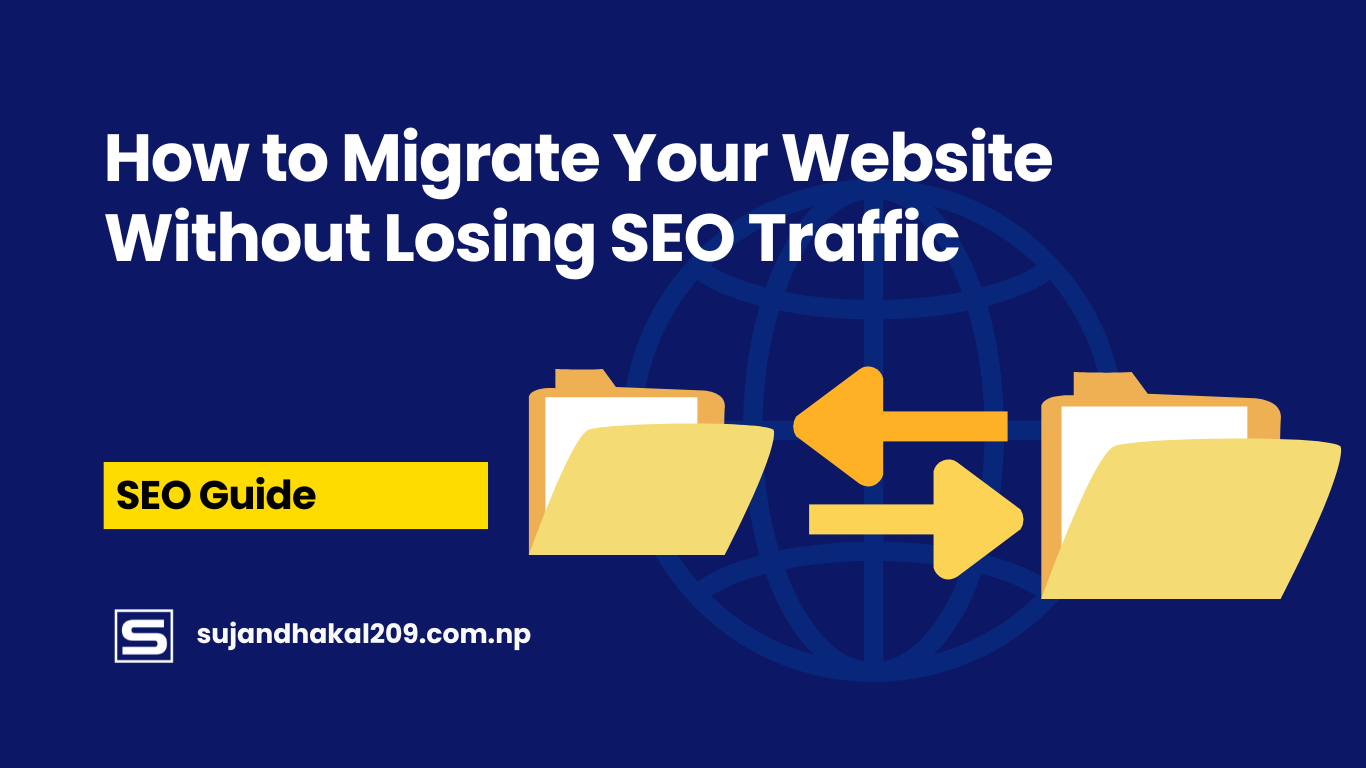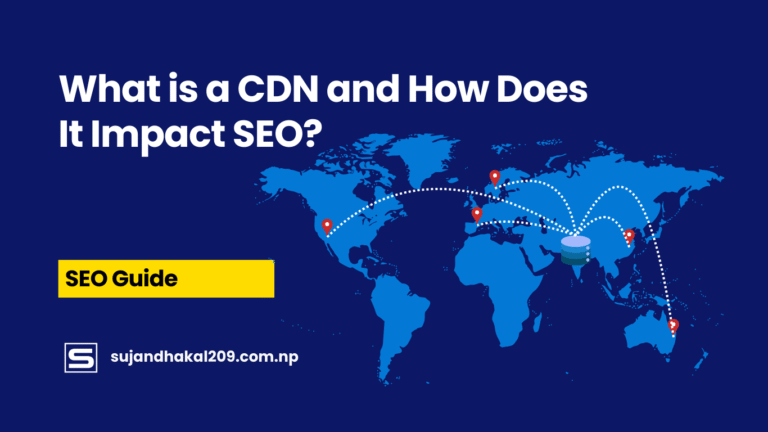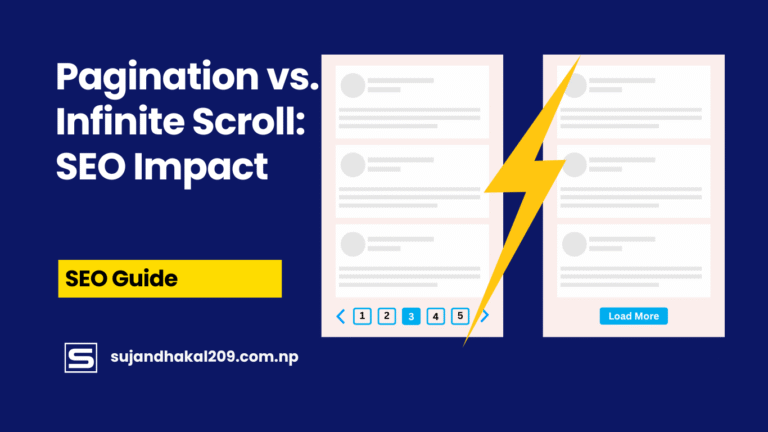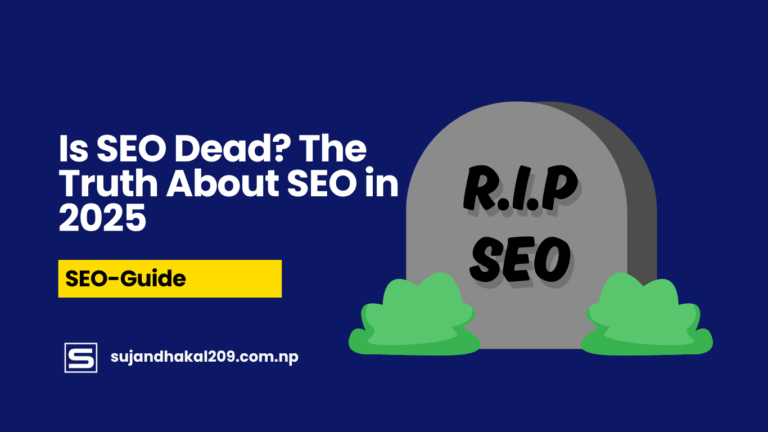Migrating your website is a lot like moving homes. If you don’t pack carefully and label everything correctly, things get lost—and in this case, what gets lost is your hard-earned SEO traffic. Whether you’re changing your domain, redesigning your site, or switching CMS platforms, one misstep can tank your rankings and organic traffic. But with the right approach, planning, and tools, you can migrate without sacrificing your SEO performance.
This guide dives deep into the full process, showing you step-by-step how to safely move your website without losing visibility, traffic, or revenue. Let’s get started with the foundation: understanding what website migration really means.
Understanding Website Migration
What is Website Migration?
Website migration refers to any major change to a site’s structure, platform, location, or content that can significantly affect its visibility in search engines. This could mean moving from HTTP to HTTPS, changing your domain name, switching CMS platforms (like from Wix to WordPress), redesigning your site, or even altering your URL structure.
But unlike a simple update, migrations involve critical SEO considerations. If not handled properly, search engines may not recognize your site in its new form, leading to ranking drops and lost traffic.
There are several types of website migrations:
- Domain migration: Changing from one domain to another (e.g., from yourbrand.com to yournewbrand.com).
- Protocol migration: Switching from HTTP to HTTPS.
- Platform migration: Moving to a different CMS (e.g., Squarespace to WordPress).
- Structural migration: Changing the URL structure or site hierarchy.
- Content migration: Merging, deleting, or revamping large amounts of content.
Each of these migrations can disrupt your SEO signals—so careful planning is essential.
Why Do Businesses Migrate Websites?
There are plenty of reasons to migrate a website, and they often fall into two categories: strategic and technical.
Strategic reasons:
- Rebranding or renaming the company
- Expanding into international markets
- Merging multiple domains or properties
Technical reasons:
- Upgrading the website’s infrastructure
- Improving website performance or mobile usability
- Switching to a more SEO-friendly CMS
Whatever the reason, you’re essentially moving a digital house, and if you don’t forward the mail (redirect URLs), visitors—and Google—won’t find you.
SEO Impacts of Poor Migration
The horror stories are real: businesses seeing their traffic drop by 80% overnight after a botched migration. If redirects aren’t implemented properly, if internal links break, or if important SEO pages are lost in transition, search engines will treat your new site as a separate entity—one without any ranking history or authority.
Here’s what can go wrong:
- Loss of backlinks: Backlinks pointing to old URLs won’t count unless redirected correctly.
- Duplicate content issues: If pages are accessible via multiple URLs, Google might penalize you.
- Indexing problems: Search engines might ignore your new site or take weeks to re-crawl it.
- Ranking drops: Core pages may lose their keyword rankings due to broken signals.
Avoiding these issues requires proactive planning, and that’s where the next stage—pre-migration planning—comes in.
Pre-Migration Planning
Setting Clear Migration Goals
Every great migration starts with clear, measurable goals. Are you trying to rebrand? Improve technical SEO? Combine two websites? Before touching any code, get specific about what you want to achieve.
Here are some essential questions to ask:
- What’s the main reason for migrating?
- What metrics will define success? (e.g., traffic retention, bounce rate, rankings)
- What’s your timeline and budget?
- What’s the fallback plan if things go wrong?
This phase is also where you should consider your SEO priorities. If keeping your rankings and organic traffic intact is non-negotiable, everything in the migration should be aligned with that outcome.
Choosing the Right Time to Migrate
Timing is everything. The worst time to migrate is during peak traffic seasons or right before a product launch. Instead, pick a period where traffic is historically low and your team has full availability.
Ideal migration times include:
- Early weekdays (Tuesdays or Wednesdays) when dev teams are available
- Off-season months for your industry
- Avoiding holidays or high-ad spend periods
Also, give search engines time to crawl and index your changes—don’t expect everything to normalize overnight.
Assembling Your SEO Migration Team
Website migration is a team sport. You’ll need collaboration between developers, SEOs, content managers, and stakeholders. Assign clear roles to avoid confusion during the process.
Your dream SEO migration team might include:
- SEO Specialist: Oversees URL mapping, redirects, and optimization
- Web Developer: Implements redirects, server changes, staging setup
- Project Manager: Coordinates timelines and tasks
- Content Strategist: Manages changes in content, structure, and meta data
- QA Tester: Tests staging and live site for functionality and SEO issues
With everyone on the same page, you’ll be far less likely to run into surprises on launch day.
Performing a Full Website Audit
Crawl Your Existing Site
Before you migrate anything, you need a complete blueprint of your current website. This means performing a full crawl using SEO tools like Screaming Frog, Sitebulb, or Ahrefs. The goal is to gather an inventory of every URL on your site, along with important SEO data.
Your site crawl should extract details such as:
- Current URLs
- Page titles and meta descriptions
- Header tags (H1, H2, etc.)
- Status codes (200, 301, 404, etc.)
- Canonical tags
- Internal and external links
- Image alt text
By mapping all of this, you’re preparing to track what’s being carried over, what’s changing, and what’s being removed. Think of it as packing up all your SEO assets into clearly labeled boxes.
Bonus tip: Make sure to crawl both the www and non-www versions, as well as HTTP and HTTPS, to catch duplicate or misconfigured content.
Benchmark SEO Metrics
How do you know if your migration was successful? You measure it. Benchmark your current SEO performance before the migration so that post-move comparisons are meaningful.
Here are key metrics to benchmark:
- Organic traffic (overall and by page)
- Keyword rankings (branded and non-branded)
- Bounce rate
- Backlink profile
- Page speed and Core Web Vitals
- Index coverage in Google Search Console
Document everything. If traffic drops post-migration, this data will help diagnose where and why. It also gives you a way to prove success when things go right.
Identify Top-Performing Pages
Every site has “money pages”—those that bring in the most traffic, conversions, or backlinks. If those pages break or vanish during migration, your revenue could nosedive.
Use Google Analytics, Search Console, or tools like SEMrush to identify:
- High-traffic pages
- Pages ranking for competitive keywords
- Top landing pages
- Pages with the most backlinks
These pages need white-glove treatment. Double-check redirects, ensure content is preserved, and maintain meta tags exactly. Even small tweaks can alter search engine behavior.
Create a URL Mapping Strategy
Mapping Old URLs to New URLs
URL mapping is one of the most important parts of SEO-safe migration. It’s your way of telling search engines: “This old page now lives here.”
Create a spreadsheet that matches each existing URL to its new counterpart. Include:
- Old URL
- New URL
- Redirect type (usually 301)
- Notes for changes (e.g., content updated, merged)
Make sure every important page has a corresponding destination. If you’re not changing URLs, great—still map them to ensure nothing gets missed.
This step ensures continuity for search engines and users, preserving your link equity and keeping rankings intact.
Handling Page Removal or Merging
Not all pages are worth migrating. Some might be outdated, irrelevant, or duplicate. But deleting pages without a plan leads to 404 errors, which can hurt SEO and user experience.
Here’s how to handle them:
- Consolidate content: Merge thin or overlapping content into one robust page.
- Redirect with relevance: If you delete a page, redirect it to the most closely related content.
- Use 410 status codes carefully: Only for pages that are permanently gone with no replacement.
Pro tip: Avoid redirecting everything to your homepage. It confuses search engines and users alike.
Using 301 Redirects Correctly
A 301 redirect signals to search engines that a page has permanently moved. It also passes the majority of link equity to the new URL—essential for SEO continuity.
Key 301 redirect tips:
- Implement server-side redirects (via .htaccess, NGINX, or your CMS).
- Avoid redirect chains (e.g., page A > B > C).
- Test every redirect manually and with tools.
- Update internal links to point directly to the new URLs, bypassing the redirects altogether.
Redirects aren’t optional—they’re the bridge between your old SEO value and your new setup.
Updating Your Website Structure
Navigational Consistency
When migrating, it’s tempting to revamp your menu or change how your site is organized. But drastic changes to navigation can confuse both users and search engines.
Here’s what to watch:
- Keep primary navigation familiar
- Avoid orphaned pages (pages with no internal links)
- Maintain breadcrumb trails and clear hierarchy
Google uses your internal link structure to understand content relationships. Sudden changes can disrupt crawl paths and SEO signals.
Preserving Internal Linking
Your internal linking strategy is a silent SEO powerhouse. During migration, ensure that all internal links are updated to the new URLs—not left pointing to the old ones.
Steps to ensure internal link health:
- Use a crawler to identify internal links pre-migration
- Update anchor text if necessary
- Avoid broken or redirected links within content
Don’t let your internal links become a house of cards. They guide both users and bots through your site, so keep them solid.
Updating XML Sitemap
Your XML sitemap tells search engines what pages to crawl. After a migration, you need a fresh sitemap reflecting the new URLs.
Tips for sitemaps post-migration:
- Generate a new sitemap with updated URLs
- Include only indexable, canonical pages
- Submit the new sitemap to Google Search Console and Bing Webmaster Tools
- Monitor sitemap indexing status regularly
If your sitemap still contains outdated or broken URLs, it’s like giving Google the wrong map to your house.
On-Page SEO Optimization During Migration
Maintaining Meta Titles and Descriptions
Even during a migration, your on-page SEO elements like titles and descriptions must remain intact. Changing them unnecessarily can impact click-through rates and rankings.
Best practices:
- Retain original titles and descriptions where pages are unchanged
- For updated or merged content, craft new metadata with target keywords
- Avoid duplicating titles across new pages
- Keep character counts SEO-friendly (50–60 for titles, 150–160 for descriptions)
If it’s not broken, don’t fix it. Keep your meta tags consistent unless there’s a compelling reason to change them.
Image Optimization and Alt Tags
Images often get overlooked during migrations. But large image files and missing alt text can slow down your site and harm accessibility.
Make sure to:
- Compress and resize images before uploading to the new site
- Keep file names descriptive and keyword-rich
- Reapply all existing alt tags
- Use next-gen formats like WebP when possible
Google can’t “see” your images, but it reads the alt text. Don’t skip this SEO detail.
Structured Data Transfer
Structured data (schema markup) enhances your search listings with rich snippets. If your old site had schema, be sure to reimplement it exactly—or improve it.
Important schema to include:
- BreadcrumbList
- Article or BlogPosting
- Product and Offer (for eCommerce)
- Organization and Website
Use Google’s Rich Results Test to validate your structured data after migration. Proper markup improves visibility in search and click-through rates.
Technical SEO Considerations
HTTPS and Canonical Tags
If your migration involves moving form HTTP to HTTPS you need to evaluate your canonical implementation throughout your website. Using a free HTTPS/SSL is option you may explore here.
Why HTTPS matters:
- Google uses HTTPS as a ranking signal.
- It protects user data and builds trust.
- Most modern browsers now flag HTTP sites as “Not Secure.”
How to implement it properly:
- Install an SSL certificate before launch.
- Force HTTPS using 301 redirects from HTTP.
- Update canonical tags to point to HTTPS URLs (not HTTP).
- Update internal links and sitemaps to HTTPS.
Canonical tags play a key role in preventing duplicate content issues. If you’re changing your URL structure or merging pages, each page must have the correct self-referencing canonical tag.
Mess this up, and Google might index the wrong version of your content—or ignore it altogether.
Mobile Optimization and Core Web Vitals
Over 60% of searches now happen on mobile devices. So if your migration leads to a clunky or unresponsive mobile experience, expect Google to demote your rankings fast.
Key elements to optimize:
- Responsive design: Your new site must work perfectly across devices.
- Tap targets: Ensure buttons and links are easy to tap.
- Font size: Keep it legible on all screens.
Core Web Vitals, introduced by Google, focus on user experience. These include:
- Largest Contentful Paint (LCP): How fast your main content loads.
- First Input Delay (FID): How quickly users can interact.
- Cumulative Layout Shift (CLS): How stable the layout is during loading.
Use tools like PageSpeed Insights, GTmetrix, or Lighthouse to test and improve performance. Google rewards fast, user-friendly sites—especially post-migration.
Page Speed and Performance Enhancements
A new site should be faster—not slower. Site speed impacts rankings, bounce rates, and user satisfaction. During your migration, take time to implement real improvements.
Here’s what to check:
- Minify CSS, JavaScript, and HTML
- Enable browser caching and GZIP compression
- Use lazy loading for images and videos
- Optimize server response times
- Use a content delivery network (CDN) for faster global access
Page speed is no longer a luxury—it’s a competitive necessity. Don’t migrate without making measurable performance gains.
Test the Staging Site Before Launch
SEO Testing Checklist
A staging site lets you test everything before going live. But it’s not just about visuals—you must test the SEO backbone too.
SEO testing essentials:
- Confirm all 301 redirects are functioning
- Validate canonical tags and meta data
- Ensure all internal links are updated
- Check for broken links and 404s
- Crawl the staging site to simulate search engine behavior
Don’t forget to block search engines from indexing your staging environment using robots.txt or noindex tags—until you’re ready to go live.
Ensuring Functional Redirects
Run a redirect audit before launch. Redirects that don’t work can destroy your SEO.
Use tools like Screaming Frog, Ahrefs, or a simple Excel VLOOKUP to test:
- All mapped URLs redirect correctly to their new location
- No 302 (temporary) redirects are used in place of 301s
- Redirect chains or loops are avoided
Functional redirects preserve link equity, prevent 404 errors, and guide users and search engines to the correct content.
Identifying Crawl and Index Issues
Before flipping the switch, make sure search engines will be able to find and index your new site. This means testing crawlability and indexability.
Checklist:
- Check
robots.txtisn’t blocking important sections - Use Google Search Console’s URL Inspection Tool
- Run a crawl simulation using SEO tools
- Test your sitemap for errors and completeness
Crawl errors and index issues are like potholes on your new road. Fix them before launch, or risk a bumpy SEO ride.
Launching the New Website
Go Live with SEO in Mind
Launch day should be strategic—not chaotic. Make sure your team is available, your backup is in place, and your SEO assets are ready.
Before launching:
- Unblock the site for search engines
- Submit your new XML sitemap
- Trigger a full crawl using Google Search Console
- Manually check top pages for redirects, content, and visuals
Consider launching during low-traffic hours to minimize disruptions. Keep open communication with your team and monitor everything in real time.
Monitor Crawl Errors and Indexing
Post-launch, your job is just beginning. You’ll need to closely monitor how Google and Bing react to your new site.
Use Google Search Console to check:
- Index coverage reports for errors
- Crawl stats and page indexing
- Submitted sitemap performance
- Manual actions or penalties (hopefully none!)
If pages aren’t indexing, review robots.txt, noindex tags, and internal links. Catching and fixing these early can prevent a massive SEO dip.
Submit New Sitemap to Search Engines
Your new sitemap is your site’s roadmap. It tells search engines exactly what to index and helps them crawl efficiently.
Steps to submit:
- Upload the sitemap to your site root (e.g., yoursite.com/sitemap.xml)
- Add it to Google Search Console and Bing Webmaster Tools
- Monitor how many pages are submitted vs indexed
Keep an eye on this over the next few weeks. A slow crawl doesn’t mean disaster—but a total indexing failure needs immediate attention.
Post-Migration SEO Monitoring
Track Rankings and Traffic Trends
You may see temporary fluctuations in rankings and traffic. The key is to identify which changes are natural and which require intervention.
Track:
- Overall traffic (Google Analytics)
- Keyword rankings (Ahrefs, SEMrush, or Moz)
- Top landing pages
- Bounce rates and session duration
Compare against your benchmarks. If rankings continue to decline after 2–3 weeks, investigate specific causes.
Use Google Search Console & Analytics
These tools are your best friends post-migration. Use them daily (at least weekly) to stay ahead of any issues.
In Search Console:
- Check for indexing issues
- Monitor mobile usability
- Look for new errors in performance reports
In Analytics:
- Track organic traffic trends
- Compare behavior metrics between new and old versions
- Monitor conversions to ensure business goals are met
Data is your best weapon for SEO recovery or success.
Identify and Fix SEO Drops Quickly
Some SEO dips are normal—Google needs time to re-crawl and re-evaluate. But if a sharp drop persists, act quickly.
Troubleshooting steps:
- Re-check redirect mappings and status codes
- Compare content for any differences
- Use a crawler to spot broken links, missing tags, or blocked resources
- Restore key elements (e.g., missing meta tags, structured data)
Speed matters here. The faster you fix the root issue, the quicker your traffic and rankings can rebound.
Common Website Migration Mistakes to Avoid
Missing Redirects
One of the most catastrophic errors during a website migration is neglecting proper redirects. If you don’t create 301 redirects from your old URLs to the new ones, search engines and users will encounter 404 errors.
Impact of missing redirects:
- Loss of SEO value and backlinks
- Increased bounce rates
- Damaged user experience
Always double-check your URL mapping and test every redirect before going live. It’s not just a minor task—it’s one of the most critical parts of a successful migration.
Duplicate Content Creation
Changing your site structure or content without proper canonicalization can inadvertently create duplicate content. Google might get confused about which version to index, potentially hurting your rankings.
Common causes:
- Forgetting to update canonical tags
- Multiple versions of pages live (e.g., HTTP/HTTPS, www/non-www)
- Unintentional duplication through content cloning
Prevent this by ensuring that canonical URLs are properly set and that old pages are redirected to the most appropriate new page.
Losing Crawl Budget Efficiency
Your crawl budget is the number of pages Googlebot crawls and indexes on your site within a given time. If your site becomes inefficient—because of broken links, redirect chains, or bloated sitemaps—you risk Google not fully indexing your site.
How to protect your crawl budget:
- Eliminate redirect chains
- Fix broken links quickly
- Submit a clean, updated sitemap
- Block unimportant pages from crawling with
robots.txt
Fixing your crawl budget ensures that Google focuses its attention on the pages that matter most.
Tools to Help with SEO-Safe Migration
Screaming Frog and Sitebulb
These powerful crawling tools help simulate how search engines view your site. They’re crucial for:
- Mapping out existing URLs
- Identifying missing tags
- Highlighting redirect errors
- Finding broken links
Use these tools before, during, and after migration to maintain a healthy site structure.
Google Search Console and Bing Webmaster Tools
These free tools from Google and Microsoft allow you to:
- Submit sitemaps
- Monitor indexing issues
- Check crawl stats
- Identify manual actions or penalties
Don’t just set them up—use them actively to diagnose and resolve SEO issues quickly after migration.
Ahrefs, SEMrush, and Other SEO Suites
Paid SEO suites like Ahrefs, SEMrush, and Moz provide deeper insights:
- Monitor backlink health
- Track keyword rankings
- Audit technical SEO elements
- Analyze competitor sites
They offer comprehensive data you can’t afford to ignore during a high-stakes migration.
Case Studies: Successful Website Migrations
E-commerce Website Migration Example
An online fashion retailer migrated from Magento to Shopify while rebranding. By carefully mapping all product URLs, implementing 301 redirects, and testing staging environments, they retained 95% of their organic traffic within three months—and improved conversion rates by 20%.
SaaS Website Migration Without Traffic Loss
A SaaS company shifted from a custom CMS to WordPress for scalability. They benchmarked all SEO metrics, preserved core landing pages, maintained backlink integrity, and communicated migration timelines with customers. Result? No dip in SEO traffic—and a 30% rise in leads due to improved site speed.
Rebranding and Domain Change Case Study
A large B2B service provider changed its domain to reflect a new brand identity. They created a comprehensive URL map, notified Google of the address change, and updated all external links where possible. SEO rankings dipped slightly at first but recovered fully within 60 days.
Pro Tips from SEO Experts
Use A/B Testing When Possible
If you’re making major structural or content changes, use A/B testing to compare how old vs new pages perform. This gives you real data, helping avoid unnecessary SEO risks.
Create a Migration Recovery Plan
Prepare for worst-case scenarios. Your recovery plan should include:
- Backup of the old website
- Detailed error tracking process
- Quick rollback options
- Scheduled SEO audits post-launch
Having a plan ensures you don’t panic when things go sideways—which, let’s face it, can happen even to seasoned pros.
Communicate with Your Users and Stakeholders
Don’t keep your migration a secret. Inform your customers, stakeholders, and partners ahead of time. Let them know:
- When the migration will happen
- What (if anything) will change
- Who to contact in case of problems
Good communication keeps trust high, even if minor issues arise during the transition.
Final SEO Migration Checklist
Pre, During, and Post-Migration Tasks
| Phase | Key Tasks |
|---|---|
| Pre-Migration | Full crawl, benchmark metrics, URL mapping, set goals |
| During Migration | Implement redirects, preserve SEO elements, update sitemap |
| Post-Migration | Monitor rankings, check crawl errors, fix issues fast |
Must-Have SEO Checks Before Going Live
Before the big launch, verify:
- All 301 redirects are working
- Canonical tags are correct
- Internal linking is updated
- No orphaned or broken pages
- Mobile-friendliness is tested
- Core Web Vitals are healthy
Triple-check these elements to give your new site the best chance at SEO success.
Conclusion
Migrating a website without losing SEO traffic isn’t about luck—it’s about strategy, planning, and precision. Every decision you make, from URL mapping to redirects to mobile optimization, will impact your rankings and organic visibility.
Take the time to crawl your existing site, map out changes, test everything, and monitor carefully after launch. With the right steps, you can not only maintain your SEO—but even enhance it with a modernized, faster, and better-optimized site.
Remember, SEO is an ongoing process. Stay vigilant, stay strategic, and you’ll navigate the migration with your rankings intact—and maybe even higher than before.
FAQs
How long does it take for SEO to recover after migration?
It typically takes between 1 to 3 months for SEO to stabilize after a migration, but significant issues can prolong recovery. Consistent monitoring and prompt fixes help shorten this timeline.
Should I pause marketing during a website migration?
Not necessarily. It’s wise to hold back on major campaigns right at launch, but ongoing marketing can help drive traffic and signal engagement to search engines, aiding recovery.
Is it necessary to inform Google about the migration?
Yes! Especially for domain changes, you should use the “Change of Address” tool in Google Search Console and submit updated sitemaps immediately.
What is the best time of year to migrate a website?
Choose a low-traffic period for your business. Avoid peak seasons, holidays, or major sales periods to minimize disruptions and give search engines time to adjust.
Can a migration improve SEO rankings?
Absolutely! If you combine migration with technical improvements like better site speed, mobile responsiveness, and clean architecture, you can boost your SEO performance post-migration.





